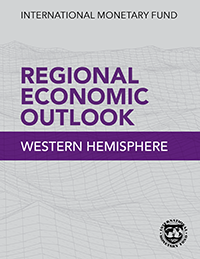At a Glance
- Current IMF membership: 190 countries
- Ecuador joined the Fund on December 28, 1945
- Quota: SDR 697.7 million
- Number of Arrangements since membership: 23
- Outstanding Purchases and Loans (SDR): 5826.88 million (May 31, 2024)
- Article IV/Country Report: May 31, 2024
- Most recent IMF Arrangement: Latest Report (May 31, 2024)
Office Activities
The IMF Resident Representative Office in Ecuador is composed of the Resident Representative and a local team: an economist, an office manager, a research analyst, and a driver.
The office follows economic developments and policies in Ecuador, liaises between the Ecuadorian authorities and IMF staff in Washington, and coordinates IMF technical assistance. It is also a source of information about IMF views for the public, local and foreign analysts, civil society organizations, investors, academic and research institutions, as well as Ecuador’s international partners and their diplomatic missions.
IMF's Work on Ecuador
-
IMF Executive Board Approves 48-Month US$4 Billion Extended Fund Facility Arrangement for Ecuador
May 31, 2024
The Executive Board of the International Monetary Fund (IMF) approved today a 48-month extended arrangement under the Extended Fund Facility (EFF) for Ecuador, with access equivalent to SDR 3 billion (430 percent of quota, equivalent to US$4 billion).
-
May 31, 2024
Series:Country Report No. 2024/146
-
Transcript of IMF Press Briefing
May 16, 2024
Good morning, everyone, both to those of us here in person and also those joining us online. Welcome to this IMF Press Briefing. I am Julie Kozack, Director of Communications at the IMF. As usual, this briefing is embargoed until 11:00 a.m. Eastern Time in the U.S. I will start with some announcements and then we'll move to your questions in person, on Webex, or through the Press Center.
-
IMF Reaches Staff-Level Agreement with Ecuador on a New 48-Month Extended Fund Facility Arrangement
April 25, 2024
: IMF staff and the Ecuadorian authorities have reached a staff-level agreement on a set of policies to underpin a 48-month arrangement under the EFF in the amount of SDR 3 billion (about US$4 billion and 430 percent of quota).
-
Transcript of Western Hemisphere Department April 2024 Press Briefing
April 19, 2024
Good afternoon. Welcome, everyone. Welcome to the Regional Economic Outlook Press Briefing for the Western Hemisphere.
Regional Economic Outlook

Western Hemisphere
Regional Economic Outlook
October 2022Recent developments in the Western Hemisphere—that is, the United States/Canada and Latin America and the Caribbean (LAC)—have been dominated by the impact of two distinct global shocks: the COVID-19 pandemic and then the Russian invasion of Ukraine. A third shock—the tightening of financial conditions—is now shaping the outlook. After contracting sharply in 2020, most of the Western Hemisphere’ economies recovered strongly in 2021 and early 2022, helped by the global recovery, the normalization of service sectors, and booming commodity prices. However, inflation pressures built up with pandemic-related disruptions, expansionary policies, rebounding demand, and the impact of the war in Ukraine on energy and food prices. The swift response of LAC’s monetary authorities to rising inflation—well ahead of other economies—helped contain price pressures and keep long-term inflation expectations anchored, but inflation remains high. Amid global monetary and financial tightening, and the ensuing slowdown in global growth and softening of commodity prices, activity is expected to decelerate throughout the Western Hemisphere in late 2022 and 2023, while inflation pressures are expected to recede gradually. Downside risks dominate the outlook and stem from tighter financial conditions, a more pronounced global slowdown, and entrenched inflation. For LAC, a sharp fall in commodity prices and social unrest are important risks. With inflation yet to abate and most economies still operating at or near potential, monetary policy should avoid easing prematurely and must stay the course. Clear communication of policy intentions will be key to reducing uncertainty and keeping inflation expectations anchored. Fiscal support deployed to mitigate the impact of inflation on the most vulnerable should be accompanied by compensating measures, where fiscal space does not exist, but also support monetary authorities’ efforts to tame inflation. Given rising financing costs, strengthening fiscal frameworks and advancing with inclusive fiscal consolidation—that protects key social objectives—will be essential to credibly putting public debt on a firm downward path while ensuring social stability. Boosting LAC’s medium-term growth requires raising productivity and good-quality public and private investment. Supply-side policies should focus on strengthening human capital, simplifying and modernizing labor regulations, and lifting barriers to firm entry and exit.
Read more: Regional Economic Outlook for the Western Hemisphere, October 2022



